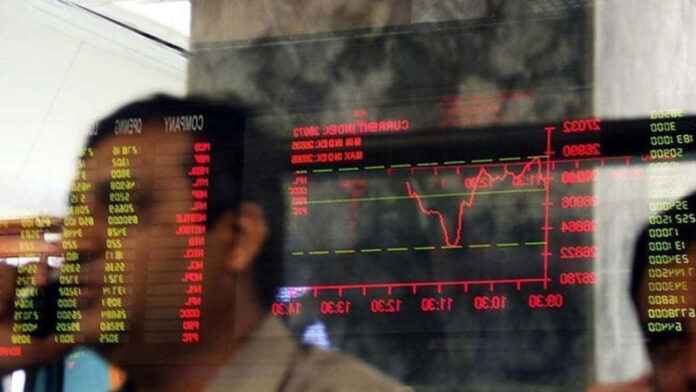SINGAPORE: Asian shares got a lift from Wall Street on Wednesday thanks to a fresh wave of optimism over artificial intelligence, as investors braced for a busy day headlined by the Federal Reserve’s decision and earnings from technology heavyweights.
The prospect of lower U.S. rates this week supported bonds, while the dollar sustained losses as investors bet Wednesday’s expected Fed cut would not be the last for the year.
Overnight, Wall Street closed at record highs after upbeat news from Nvidia and Microsoft, with the former announcing $500 billion in bookings for its AI chips and that it would build seven supercomputers for the U.S. Department of Energy.
Microsoft meanwhile reached a deal allowing OpenAI to restructure into a public benefit corporation while giving the software giant a stake of 27% in the ChatGPT maker.
That helped propel stocks in Asia higher, with MSCI’s broadest index of Asia-Pacific shares outside Japan rising 0.16% while Japan’s Nikkei jumped more than 1% to hit another record.
South Korea’s Kospi similarly scaled an all-time high, helped by strong earnings and a bullish outlook from SK Hynix, an Nvidia supplier.
The “Magnificent Seven” tech titans Microsoft, Alphabet and Meta are due to report earnings later on Wednesday, where there are lofty expectations for them to deliver strong results that would justify stretched valuations.
“Expectations are sky-high, and the bar for disappointment is high too,” said Charu Chanana, chief investment strategist at Saxo.
“Investors want to see not just solid numbers but evidence of sustained AI monetisation and broadening demand beyond the initial boom. That’s where the market will judge if this AI boom is becoming a bubble or not.”
Nasdaq futures were up 0.06% while S&P 500 futures were little changed. EUROSTOXX 50 futures fell 0.14%.
Betting On A Dovish Fed
Also key for investors later in the day will be a highly anticipated rate decision from the Fed, where a 25-basis-point cut is almost fully priced in.
Alongside the rate move, markets will be watching whether the central bank could halt its long-running effort to shrink its balance sheet, known as quantitative tightening (QT).
“The end of QT, if announced, would be interpreted as a dovish shift, especially if it comes with hints of maintaining balance-sheet stability,” said Saxo’s Chanana.
The two-year Treasury yield held at 3.4904% while the benchmark 10-year yield stood at 3.9814%, as traders awaited further validation from the Fed on market pricing for a December easing as well.
The Fed cut expectations in turn left the dollar weak on Wednesday, with the euro and sterling firming at $1.1652 and $1.3272, respectively.
The Aussie dollar rose 0.17% to $0.6598, after data showed domestic inflation rose by the most in over two years in the September quarter. A shockingly sharp jump in core inflation seemed to rule out a near-term interest rate cut from the Reserve Bank of Australia.
In Japan, the yen strengthened 0.3% to 151.66 per dollar, after U.S. Treasury Secretary Scott Bessent escalated his warning to Tokyo against keeping the yen too weak through prolonged low borrowing costs.
The Bank of Japan (BOJ) announces its policy decision on Thursday, where expectations are for rates to be kept steady.
“We expect the BOJ to adopt a moderately hawkish hold, signalling its intention to normalize policy in the coming months and laying the groundwork for a possible rate hike, likely in December or potentially January,” said Gregor Hirt, global CIO for multi asset at Allianz Global Investors.
“Governor (Kazuo) Ueda may provide some moderate push-back to mitigate further currency weakening in the absence of immediate policy action.”
Elsewhere, oil prices rose, snapping three straight days of declines as investors considered the impact of U.S. sanctions against Russia’s two biggest oil companies on global supply, along with a potential OPEC+ plan to raise output.
Brent crude futures were up 0.28% to $64.58 a barrel, while U.S. crude rose 0.18% to $60.26 per barrel.
The safe-haven gold traded just shy of $4,000 an ounce, with a pick-up in risk appetite denting demand for the asset and after its recent sharp fall squeezed leveraged money out of a very crowded trade.
























